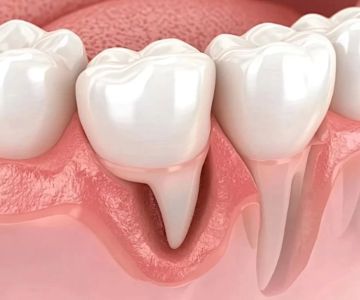What is a Root Canal and When Do You Need One?
- 1. Understanding Root Canals
- 2. Symptoms That Require a Root Canal
- 3. The Root Canal Procedure
- 4. Recovery After a Root Canal
- 5. Real-Life Experience with a Root Canal
1. Understanding Root Canals
A root canal is a dental procedure used to treat infection in the pulp of a tooth, which is the soft tissue inside the tooth that contains blood vessels, nerves, and connective tissue. When a tooth becomes severely decayed or damaged, bacteria can enter the pulp and cause an infection. This can lead to severe pain and swelling, and if left untreated, it can result in tooth loss. The root canal treatment aims to remove the infected pulp, clean the inside of the tooth, and seal it to prevent further infection.
2. Symptoms That Require a Root Canal
There are several key signs that indicate you may need a root canal:
- Severe tooth pain: Pain that is constant or worsens when chewing or applying pressure to the tooth.
- Sensitivity to temperature: Extreme sensitivity to hot or cold that lingers long after the stimulus is removed.
- Swelling and tenderness: Swelling in the gums near the infected tooth, often accompanied by tenderness and redness.
- Abscess formation: A visible pimple or bump on the gums near the infected tooth, which may release pus.
- Discoloration of the tooth: A darkened tooth can indicate that the pulp has died and requires treatment.
If you experience any of these symptoms, it's important to see a dentist as soon as possible for an evaluation and potential root canal treatment.
3. The Root Canal Procedure
During a root canal procedure, your dentist will perform the following steps:
- Initial assessment: The dentist will take X-rays to determine the extent of the infection and locate the pulp.
- Local anesthesia: The dentist will numb the area around the affected tooth to ensure you are comfortable throughout the procedure.
- Tooth access: The dentist will create a small opening in the crown of the tooth to access the infected pulp.
- Pulp removal: The infected pulp is carefully removed from the tooth’s root canals, and the space is cleaned and shaped to prepare for sealing.
- Sealing the tooth: After cleaning, the tooth is filled with a rubber-like material called gutta-percha and sealed to prevent re-infection.
- Restoration: Depending on the condition of the tooth, a crown or filling may be placed to restore the tooth’s strength and functionality.
While the root canal procedure may seem daunting, it is a routine treatment that helps save a damaged or infected tooth. The procedure is typically painless, as local anesthesia is used to numb the area, and most patients experience relief from pain after the procedure is completed.
4. Recovery After a Root Canal
Recovery after a root canal is generally quick, with most patients able to resume normal activities within a day or two. Here’s what to expect:
- Post-treatment discomfort: Some soreness or tenderness may occur in the days following the procedure, especially if the infection was severe.
- Avoiding hard foods: It is recommended to avoid chewing on the treated tooth until a permanent crown or filling is placed.
- Follow-up appointments: You may need a follow-up visit to ensure the tooth is healing properly and to place a final restoration.
- Taking pain relievers: Over-the-counter pain relievers can help manage any discomfort during the recovery period.
It’s important to follow your dentist’s aftercare instructions and attend any follow-up appointments to ensure the best possible outcome for your root canal treatment.
5. Real-Life Experience with a Root Canal
Let’s look at the case of Emily, a 32-year-old woman who had been dealing with severe tooth pain for several weeks. After her dentist diagnosed an infected pulp in one of her molars, Emily underwent a root canal. During the procedure, she was comfortable and experienced only mild discomfort afterwards. Within a few days, her pain was gone, and her tooth was restored with a crown. Emily’s experience highlights the importance of seeking treatment early to prevent further damage to the tooth and to relieve pain.







 Westgate Dental Arts
Westgate Dental Arts Coventry Family Dental
Coventry Family Dental Familia Dental
Familia Dental Dr. Daniel S. Fife, DDS
Dr. Daniel S. Fife, DDS Dentistry At Suburban Square: Michael I. Wollock, DMD
Dentistry At Suburban Square: Michael I. Wollock, DMD Comfort Care Dental
Comfort Care Dental The Importance of Oral Health Education During Pregnancy for a Healthy Pregnancy
The Importance of Oral Health Education During Pregnancy for a Healthy Pregnancy Why Skipping Dental Checkups Can Lead to Bigger Oral Health Problems
Why Skipping Dental Checkups Can Lead to Bigger Oral Health Problems Advantages of Porcelain Dental Restorations
Advantages of Porcelain Dental Restorations Best Tips for Brushing Your Teeth Properly for Healthy Gums: Essential Techniques for Oral Health
Best Tips for Brushing Your Teeth Properly for Healthy Gums: Essential Techniques for Oral Health How Can Diabetes Cause Tooth and Gum Problems? Preventing and Managing Oral Health Issues
How Can Diabetes Cause Tooth and Gum Problems? Preventing and Managing Oral Health Issues Healthy Habits for Promoting Good Oral Health and Hygiene: Tips for a Healthy Smile
Healthy Habits for Promoting Good Oral Health and Hygiene: Tips for a Healthy Smile